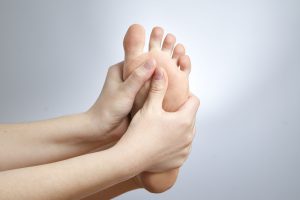Medically Reviewed by Dr. Rachel N. Verville
March 7, 2014
More than 50% of diabetic foot amputations can be avoided according to podiatric research. This is great news considering that till just recently, there were few alternatives to amputation. A leading podiatrist (physician who treats feet, ankle and leg problems) says that the most common cause that sends diabetics to a hospital is their feet and it is also the easiest to prevent.
There’s lot more cheer for people suffering from diabetic feet. Small lifestyle changes can bring big advantages to diabetics, provided they get out of the denial mode and stop being defeatist.
Why diabetic feet are at high risk?
Some 25 million Americans, infants to sophomores to seniors suffer from diabetes. Most of them yield to sluggish laid-back lifestyle, a major mistake. The already low blood supply, particularly to feet (they are farthest from heart, remember?) gets even slower and deadens sensation in feet and toes. Medically the condition has an alarming name ‘neuropathy’ and the sufferers fail to detect early red flags like injuries. One foot being warmer by about 4 degrees than the other is another warning sign that an ulcer is on way.
Given that altered blood circulation is adding its own mischief, the foot can’t fend off infection easily, a reason why it’s imperative to get early medical care.
Get back on your feet:
Minor lifestyle changes have put many people back on their feet. What happens is this: diabetics gradually reduce walking or can’t exercise because of swollen feet that ache or have developed ulcers. This is giving the disease extra handle. Reduced exercise pushes up body weight which in turn increases the ill-effects and that’s how patients reach hospital stage.
Merely limiting to spinach omelets and smoked Solomon doesn’t help you to get over the issue. Get back on feet.
Foot care:
If you give the feet proper attention, you can become active once again and in turn fight diabetes far better. Wear comfortable and medically advised footwear. Take extra care when paring nails, working with tools, cooking, walking barefoot and avoid walking on rough surfaces. Don’t neglect even small injuries, blisters or chaffed feet. Keep the feet washed and clean.
Some of the podiatrists specialize in diabetic feet problems. They suggest suitable physical therapy and give you medically supervised exercise. While in severe cases a minor surgery may be necessary to repair joints damage, medication and treatment give relief from pain and inflammation in most cases.
If feet are back in action, life can be back to being lively.









